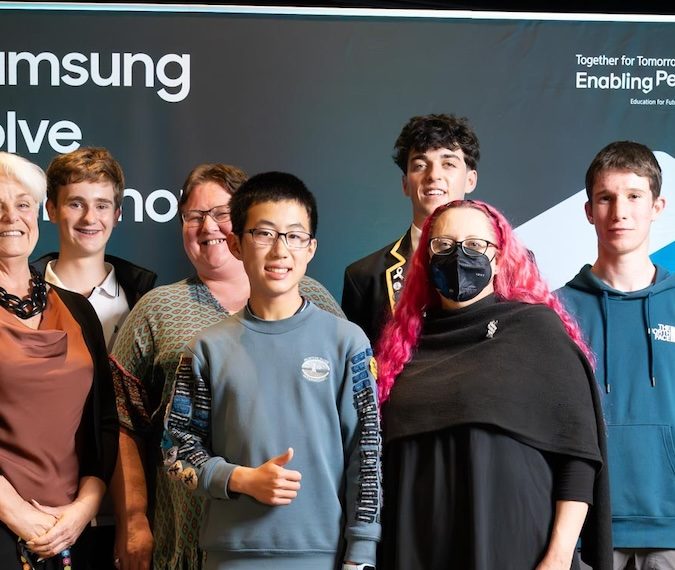
So far the website has had 89,000 users. The app has been downloaded 18,500 times, and 47% of Home Hunter home loan applications have been delivered via mobile.
It’s also pulled in a bunch of 2014 awards, notably the Purple and Gold pin at the Best Awards, an innovation award at the NZ Innovators Awards, and a CANSTAR Innovation Award.
The reason Home Hunter has been so successful? It gives the people what they want: an eminently useful product coupled with a great customer experience through the following.
Empathy and thoughtfulness
Home buying can be tough.
Kiwibank and Springload wanted to lighten the load by addressing the main customer pain points, answering customer questions such as, “What’s a property really worth?” or, “Which houses can I confidently put an offer on?”
Home Hunter displays rich real estate and bank information – like the estimated price range, or property listing information – in an interface that is easily digestible.
The Best Awards judges commented that “Home Hunter is a great example of design that takes a complex, dynamic process, and makes it dramatically friendlier” and that “the designers showed real empathy for the home seekers’ journey, and the open-homing experience”.
Designing for native and the web
Customers starting their Home Hunter journey need to be able to pick up the native app on other platforms (Android, iOS) and immediately ‘get it’ without needing to relearn a different interface: one seamless product across different digital touchpoints.
The native applications take full advantage of device features (especially location and camera features) and animations for a simple, fast, engaging user experience.
Springload did the hard yards, making the web app experience as good as its native cousins: scrolling the image-heavy listings is light on the browser and buttery smooth; search interfaces are quick and simple; property details are rich and clear.
In some instances the web interface does behave slightly differently – there are different proportions for individual home information, the search form and search results; and the navigation layout also changes, depending on screen size – but the overall experience and flow is consistent across the web and native applications. This is the direction many digital products are heading in.
Twitter is an obvious example of a product that ‘owns’ its particular style of user interface rather than leaning on platform-specific conventions – it feels pretty similar whether you’re using it on Android, iOS or the web. Google are also moving further in this direction with their Material Design language.
Interactions
You want customers to have nice things to say to their friends about your product – and it’s the little things that people notice. A lot of work went into making interactions on the native and web Home Hunter apps obvious to understand and delightful to use.
The app sliders for choosing a price range are a good example of giving those finer details love and attention. Springload used the built-in native sliders ones as a starting point, but (at the time) native controls on Android and iOS didn’t deal well with snapping to discrete points along a scale, or having more than one value on the same slider.
Much designer-developer collaboration ensued to refine the way the min and max values combine into a single digit when they’re set to the same value; or the way the slider drags along fluidly but snaps to a point when you let it go.
The impact of working out these details can be difficult to quantify (you really need to put the before and after versions through the same user testing session and watch people use them), but they can make the difference between a frustrating experience and an enjoyable one.
Springload also optimised how search works according to screen size. On phones and smaller screens, you’re presented with a list of houses and you can tap or click through to see the detail of each one.
If you’re looking at Home Hunter on a big enough screen, you get the list of search results and the detail of a particular property side by side — it’s a nice way to peruse a whole lot of houses and stay in the context of your search at the same time.
API development
To provide all this sweet property info Home Hunter talks to a lot of other data providers; and given that this is quite sensitive stuff – it’s for a bank – it has to do so very, very securely.
Springload built, and continue to maintain, the omnipotent API that drives Home Hunter. Utilising a resilient, redundant cloud infrastructure Springload aggregates data across the various sources and make it available via a securely authenticated RESTful API. Not only does the API consolidate a huge amount of data around New Zealand real estate, it also performs crucial user authentication and secure mortgage application services. No sweat.
Augmented reality
The design challenge for the augmented reality (AR) features was to make an unfamiliar, slightly complex interaction easily understood – and also to make its value clear to a new customer.
When we first tested the AR prototypes most people held the phone the usual flat way — with the camera pointed down at the ground! Not much use in an AR application, but understandable since people don’t usually hold the device vertically unless they’re taking a picture.
To address this, we display a little help graphic showing which way to move the device when the camera’s not pointing the right way.
Sun Finder gives customers an impression of how much sun a particular property gets throughout the year by superimposing the path of the sun through the device’s camera.
Springload went through a number of interface iterations for this; initially the UI was pretty complex, with location, seasons, path of the sun, location of the sun at different times of day, a compass, what to do when the camera’s not pointed the right way, how to make UI elements stand out without obscuring the camera view… Springload distilled it down to a few basic elements that feel natural and simple to use.
The Best Awards judges noted that Springload “found a compelling use case for Augmented Reality (rare in itself), then included it almost as an aside”.
Business needs
Home Hunter is as much a catalyst for more efficient business practices as it is for helping customers survive the home-buying gauntlet. A good digital product has to find that happy medium between customer needs and business needs.
For Kiwibank, Home Hunter has provided improved efficiency and better information: home loan pre-approvals now require less manual, paper-based handling (pre-approval application times have reduced from 30 minutes to less than 10); automating loan applications and standardising credit risk assessment has reduced operational costs; and Kiwibank has access to better data for pre-approving properties and applicants automatically.
Home Hunter has also generated a sizeable digital sales pipeline of high-quality leads for Kiwibank, which delivers a clear line of sight of where applicants are in the process, as well as rich customer data, such as what stage they are at in their life.
Currently 11% of Kiwibank home loan applications come via Home Hunter – and that percentage is only going to keep growing.
Springload is a New Zealand web design and development agency.
Richard Allardice is an account manager at Springload, and Brent Neave is the agency’s design lead.




